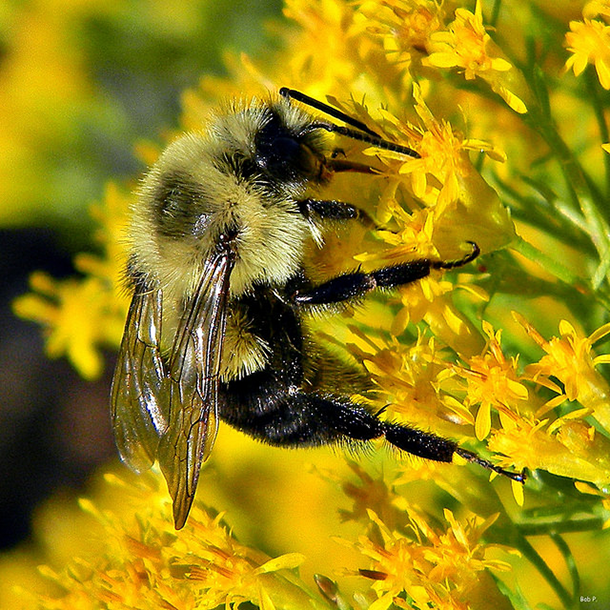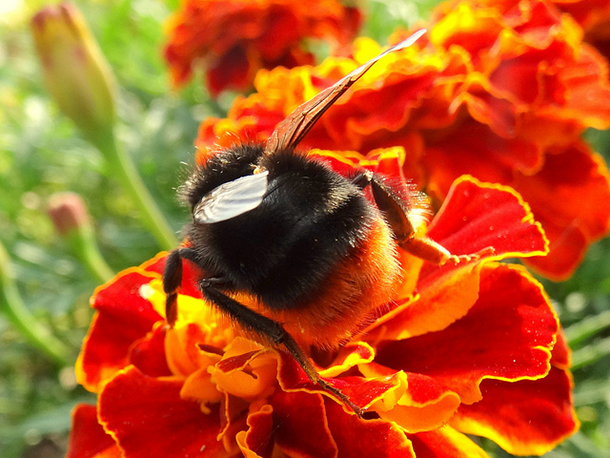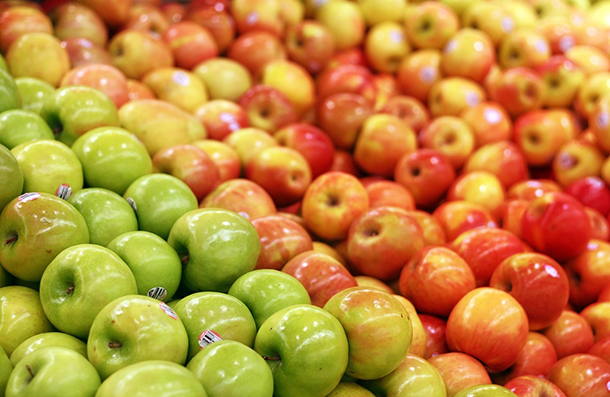Emerging Science: Undervaluing Wild Bees
Air Date: Week of July 24, 2015

One of the most abundant wild bee pollinators in North America is the common eastern bumblebee (Bombus impatiens). It is one of 49 species of bumblebees in the United States. (Photo: Bob Peterson, Flickr CC BY 2.0)
Climate change, disease and insecticides all contribute to the loss of domesticated honeybees vital for crop pollination. But as Living on Earth’s Shannon Kelleher reports, wild bees are just as valuable as pollinators and preserving their habitat is vital for their biodiversity and our food.
Transcript
CURWOOD: It's Living on Earth, I'm Steve Curwood. Just ahead, how a passionate and dedicated scientist is helping restore the Mexican prairie, but first this note on emerging science from Shannon Kelleher.
KELLEHER: Over the past decade, farmers and beekeepers have raised the alarm about empty hives and disappearing honeybees. But maybe they should also keep an eye on wild bees.
Wild bees pollinate hundreds of crops, including grocery store staples like almonds, peaches, and onions. Scientists from the University of Vermont and other institutions around the world calculated that wild bees generate about $3,000 in value for every hectare they pollinate. This means that wild bees are actually just as valuable for crop pollination as domestic honeybees, which contribute a whopping $15 billion each year in agricultural value and keep the produce aisle stocked with everything from apples to zucchini.

The red-tailed bumblebee (Bombus lapidaries) is a highly recognizable wild bee species in Europe. It can be found in many different habitats, including: farmland, grassland, heathland, towns, gardens, uplands woodlands, and the coastline. (Photo: Tom Phillips, Flickr CC BY 2.0)
Scientists also found that 80% of all bee-pollinated crops are pollinated by only 2% of wild bee species. The top pollinators are the common eastern bumblebee in the United States and the red-tailed bumblebee in Europe—species that have actually continued to thrive with the emergence of modern agriculture.

Without bees, the produce aisle would look pretty empty. Wild bees and domestic honey bees pollinate apples, mangoes, peaches, avocadoes, tomatoes, walnuts, and many other crops. (Photo: Pixabay CC0 Public Domain)
But although they pollinate fewer crops, other wild bee species are still important. Scientists say it’s crucial that we have a variety of wild bees around in case the ones we rely on most suffer from climate change or some new insecticide. The more diversity there is, the more resilient bees are likely to be. And besides, as researchers point out, conservation should be about more than just how humans can benefit. Although when you consider how heavily our food supply relies on the survival of bees, maybe a little selfishness isn’t the worst motivation.
That’s this week’s note on emerging science, I’m Shannon Kelleher.
Links
University of Vermont wild bee pollination study
Loss of pollinators can increase risk of malnutrition and disease
Living on Earth wants to hear from you!
Living on Earth
62 Calef Highway, Suite 212
Lee, NH 03861
Telephone: 617-287-4121
E-mail: comments@loe.org
Newsletter [Click here]
Donate to Living on Earth!
Living on Earth is an independent media program and relies entirely on contributions from listeners and institutions supporting public service. Please donate now to preserve an independent environmental voice.
NewsletterLiving on Earth offers a weekly delivery of the show's rundown to your mailbox. Sign up for our newsletter today!
 Sailors For The Sea: Be the change you want to sea.
Sailors For The Sea: Be the change you want to sea.
 The Grantham Foundation for the Protection of the Environment: Committed to protecting and improving the health of the global environment.
The Grantham Foundation for the Protection of the Environment: Committed to protecting and improving the health of the global environment.
 Contribute to Living on Earth and receive, as our gift to you, an archival print of one of Mark Seth Lender's extraordinary wildlife photographs. Follow the link to see Mark's current collection of photographs.
Contribute to Living on Earth and receive, as our gift to you, an archival print of one of Mark Seth Lender's extraordinary wildlife photographs. Follow the link to see Mark's current collection of photographs.
 Buy a signed copy of Mark Seth Lender's book Smeagull the Seagull & support Living on Earth
Buy a signed copy of Mark Seth Lender's book Smeagull the Seagull & support Living on Earth

